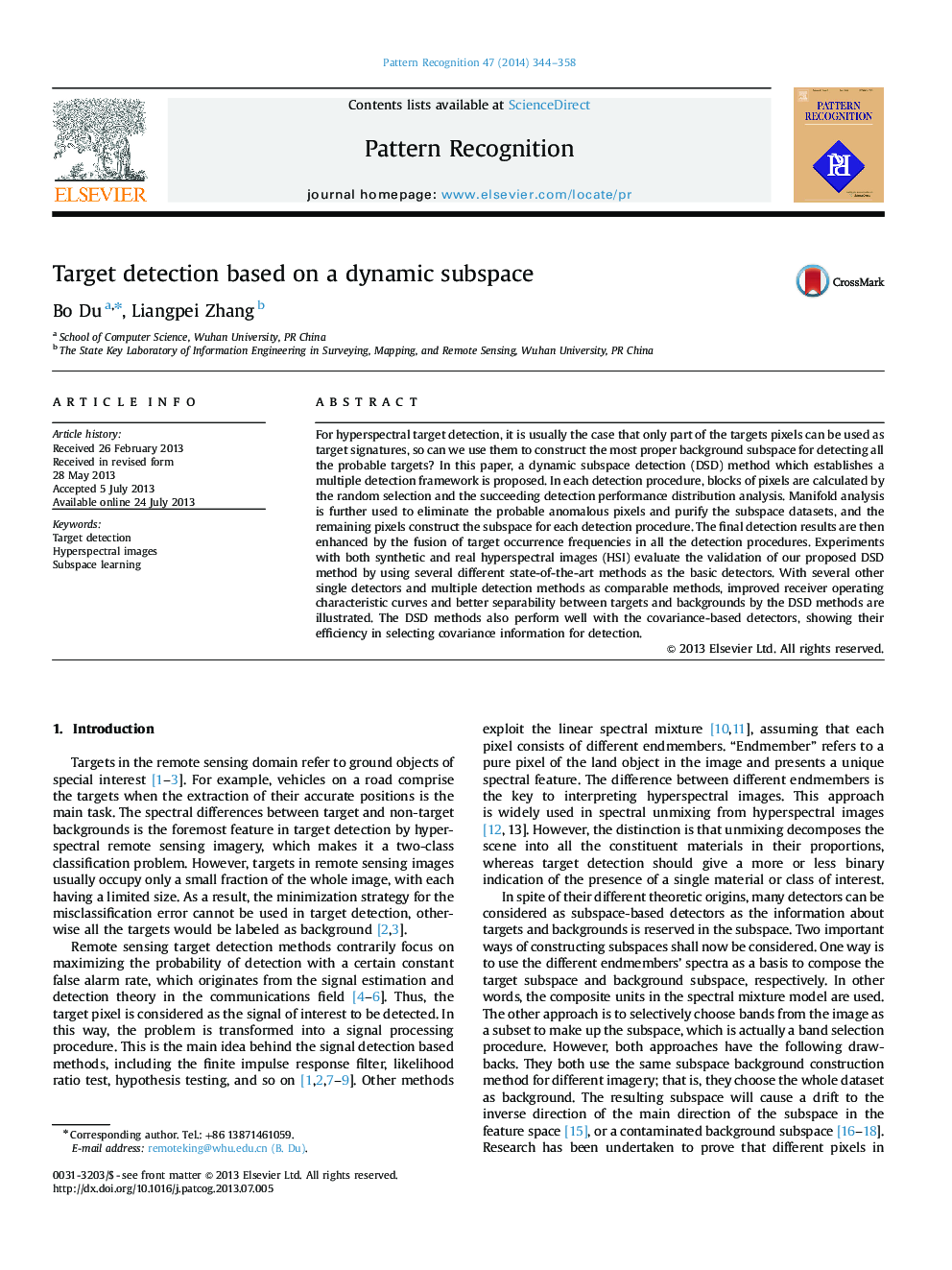| کد مقاله | کد نشریه | سال انتشار | مقاله انگلیسی | نسخه تمام متن |
|---|---|---|---|---|
| 532127 | 869910 | 2014 | 15 صفحه PDF | دانلود رایگان |
• The dynamic subspace detection theory is a useful background statistics estimation.
• Our method can find the most suitable pixels to construct detectors.
• Targets can be further distinguished by a fusion of all the detection procedures.
For hyperspectral target detection, it is usually the case that only part of the targets pixels can be used as target signatures, so can we use them to construct the most proper background subspace for detecting all the probable targets? In this paper, a dynamic subspace detection (DSD) method which establishes a multiple detection framework is proposed. In each detection procedure, blocks of pixels are calculated by the random selection and the succeeding detection performance distribution analysis. Manifold analysis is further used to eliminate the probable anomalous pixels and purify the subspace datasets, and the remaining pixels construct the subspace for each detection procedure. The final detection results are then enhanced by the fusion of target occurrence frequencies in all the detection procedures. Experiments with both synthetic and real hyperspectral images (HSI) evaluate the validation of our proposed DSD method by using several different state-of-the-art methods as the basic detectors. With several other single detectors and multiple detection methods as comparable methods, improved receiver operating characteristic curves and better separability between targets and backgrounds by the DSD methods are illustrated. The DSD methods also perform well with the covariance-based detectors, showing their efficiency in selecting covariance information for detection.
Journal: Pattern Recognition - Volume 47, Issue 1, January 2014, Pages 344–358
